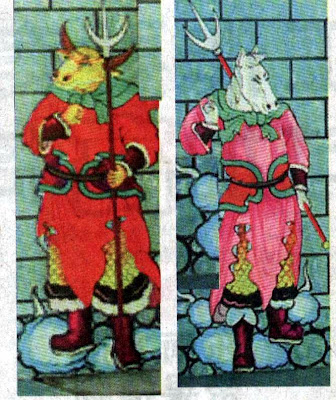 On 19.1.08 I visited Wat Patum, the forest tradition temple right in the heart of Bangkok. It is a tranquil pureland inside one of the busiest shopping areas there - Siam Square. Wat Patum is also the temple that houses the sacred Phra Serm, one of the 3 Buddha Images forged in Vientiane, Laos. If the reader remembers the story of the Legend of Phra Sai that I've related in last year's entry: http://waynedhamma.blogspot.com/2007_01_01_archive.html Phra Sai refused to leave Wat Po Chai in Nongkhai, but Phra Serm followed King Rama V's transport team back to Bangkok, eventually finding its home in Wat Patum. Above is the altar outside the Phra Sai Vihara. Yes, Wat Patum has Viharas to house replicas of Phra Sai and Phra Suk (which sunk to the bottom of Mekong river) as well. However I did not manage to see the replica of Phra Suk as that Vihara was closed.
On 19.1.08 I visited Wat Patum, the forest tradition temple right in the heart of Bangkok. It is a tranquil pureland inside one of the busiest shopping areas there - Siam Square. Wat Patum is also the temple that houses the sacred Phra Serm, one of the 3 Buddha Images forged in Vientiane, Laos. If the reader remembers the story of the Legend of Phra Sai that I've related in last year's entry: http://waynedhamma.blogspot.com/2007_01_01_archive.html Phra Sai refused to leave Wat Po Chai in Nongkhai, but Phra Serm followed King Rama V's transport team back to Bangkok, eventually finding its home in Wat Patum. Above is the altar outside the Phra Sai Vihara. Yes, Wat Patum has Viharas to house replicas of Phra Sai and Phra Suk (which sunk to the bottom of Mekong river) as well. However I did not manage to see the replica of Phra Suk as that Vihara was closed. The 7-headed Naga guardian outside the Vihara.
The 7-headed Naga guardian outside the Vihara. The replica of Phra Sai inside the Vihara.
The replica of Phra Sai inside the Vihara. A closer look at Phra Sai.
A closer look at Phra Sai.Namo Tassa (3x)
Seyya Buddha Pathi Makarang
Ahang Vandami Sabbasso
Nama Karanu Bhavena
Niddukkho Nirupaddavo
Siddhi Kiccang
Siddhi Kammang
Siddhi Kariya Tathagato
Siddhi Tejo Jayo Niccang
Siddhi Labho Niratarang
Sabba Kammang Pasiddhi Me
Sabba Siddhi Bhavantu Me.
 The Ubosot. Many lay people are gathered inside listening to the Ajarn's Dhamma talk.
The Ubosot. Many lay people are gathered inside listening to the Ajarn's Dhamma talk. This is the Phra Serm altar in the Ubosot.
This is the Phra Serm altar in the Ubosot. Side view of LP Phra Serm.
Side view of LP Phra Serm. A closeup view of Phra Serm. The Katha for Phra Serm goes:
A closeup view of Phra Serm. The Katha for Phra Serm goes:Namo Tassa (3x)
Na Mo Put Ta Ya
Na Serm Song
Mo Serm Sook
Put Serm Chok
Ta Serm Larp
Ta Serm Larp
Ya Serm Sarp
Amnat Wassana Baramee
Ahang Wantami Sappasotthi Phawantu Me (5x).
 On the left side of the Ubosot is an altar to 2 Forest Ajarns and 6 Lan Chang Buddha images.
On the left side of the Ubosot is an altar to 2 Forest Ajarns and 6 Lan Chang Buddha images. A display cabinet showing the REAL Makaliporn or mystical female fruit spirits picked up by the Forest Ajarns in during their Dhutanga travels.
A display cabinet showing the REAL Makaliporn or mystical female fruit spirits picked up by the Forest Ajarns in during their Dhutanga travels. At the front of the Ubosot were various crystal chedis containing the relics of the Buddha and various enlightened disciples.
At the front of the Ubosot were various crystal chedis containing the relics of the Buddha and various enlightened disciples. The main crystal chedi on a lotus pedestal.
The main crystal chedi on a lotus pedestal. The Buddha and Jatukam shrine outside the Ubosot.
The Buddha and Jatukam shrine outside the Ubosot. Also outside the Ubosot were various large wooden elephant guardians.
Also outside the Ubosot were various large wooden elephant guardians. A billboard advertising the latest batch of Jatukam amulets made by this temple. This batch is called "Setthi Tawon". The consecration is led by Ajarn Tawon, the current abbot.
A billboard advertising the latest batch of Jatukam amulets made by this temple. This batch is called "Setthi Tawon". The consecration is led by Ajarn Tawon, the current abbot.
The Chedi platform containing (LP Mun's?) relics in the middle of the courtyard pond. Behind we can see the BTS skytrain track.
 The Phra Buddha Chinaraj shrine in the courtyard. Wat Patum is definitely somewhere you want to go to find peace in the hustle and bustle of life in Bangkok. Its quiet enviroment is very conducive to meditation.
The Phra Buddha Chinaraj shrine in the courtyard. Wat Patum is definitely somewhere you want to go to find peace in the hustle and bustle of life in Bangkok. Its quiet enviroment is very conducive to meditation. 









 A closer shot of LP Put's body, which appeared to be still in very good condition.
A closer shot of LP Put's body, which appeared to be still in very good condition. The various Buddha statues in the LP Put Vihara.
The various Buddha statues in the LP Put Vihara.
 A closer look at the statue.
A closer look at the statue. Outside the Luang Por Tubtim Vihara.
Outside the Luang Por Tubtim Vihara. Luang Por Tubtim is the presiding Buddha image of this temple.
Luang Por Tubtim is the presiding Buddha image of this temple. A closer look at the image. It looks very much like LP Sotorn in Chachengsao.
A closer look at the image. It looks very much like LP Sotorn in Chachengsao. The Phra Leela statue outside the Vihara.
The Phra Leela statue outside the Vihara. The big Luang Por Yai Buddha image at the back of the temple.
The big Luang Por Yai Buddha image at the back of the temple.











